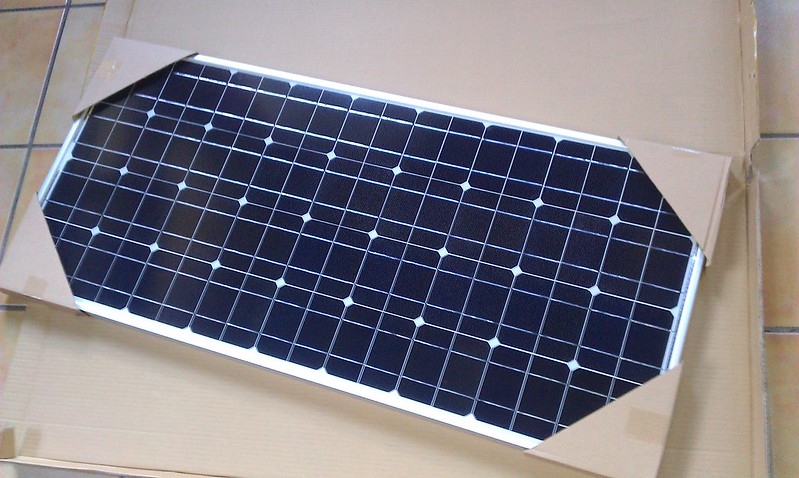There are many factors to consider before making the decision to purchase and install solar panels. Among these are the cost, location of your house, amount of sun you receive and more. Once you’ve committed to solar energy, you’ll want to review everything you need to know about solar panels. But, before you can purchase a system, the first decision you need to make is which type of solar panels to install — monocrystalline or polycrystalline.
Both monocrystalline and polycrystalline solar panels are made from silicon. However, the manufacturing process differs, which results in a difference in the efficiency of the solar panels. Let’s explore the differences and similarities in the two types of panel.
Monocrystalline solar panels
Monocrystalline solar panels are made from a single silicon ingot. To create ingots, a rod of pure crystal silicon, called a seed crystal, is placed in molten silicon. It is then slowly pulled and rotated upward, turning into a single silicon ingot. The ingot is cut into thin wafers, whose surface is roughened so it can refract more sunshine. Then, a layer of phosphorous is added to each wafer. It takes between 32 and 96 pure silicon wafers to create each solar panel. The more silicon cells in each panel, the higher the energy output.
Polycrystalline solar panels

Polycrystalline solar panels are sometimes called multi-crystalline or many-crystal solar panels. They are also made from silicon. However, instead of being created from a single wafer, they are made from multiple silicon fragments. The silicon is melted and then cools as fragments, which are molded together before being cut for the panel. The finishing process is the same as for the monocrystalline panels.
Monocrystalline solar panels vs. polycrystalline solar panels
Appearance
The cells for monocrystalline solar panels have square wafers with rounded corners. The result is a small gap between the cells. The solar panel looks dark due to the purity of the silicon. The cells for polycrystalline solar panels are square, without any rounded edges. They take on a blue color due to the way the sun interacts with the many crystallines.
Winner: No clear winner
Efficiency
To determine the efficiency of solar panels, the amount of captured sunshine that is converted into electricity is measured. The higher the number, the more efficient the system. Monocrystalline solar panels have an efficiency range from 15% to 20%, while the efficiency range for polycrystalline solar panels is from 13-16%.
Winner: Monocrystalline solar panels
Temperature coefficient
The metric that measures how well solar panels function when the temperature is hotter is the temperature coefficient. This rate is -0.3% to -0.45% on the Celsius scale for monocrystalline solar panels. That means that for each 1oC/32oF, monocrystalline solar panels will be between 0.3-0.45% less efficient. For polycrystalline solar panels, the rate is -0.5%. The end result is that monocrystalline solar panels produce 20% more electricity, on average, than polycrystalline solar panels.
Winner: Monocrystalline solar panels
Lifespan
The amount of electricity produced by solar panels is reduced, or degrades, each year. This affects the panels’ lifespans. The annual rate of degradation for monocrystalline solar panels is 0.3 to 0.5%. Solar panel manufacturers put the rate at 0.8% and often provide 25- to 30-year warranties. However, many systems can last 40 years. The degradation for polycrystalline solar panels is slightly worse, from 0.3 to 1%, resulting in a lifespan of about 35 years.
Winner: Monocrystalline solar panels
Ability to recycle
For both monocrystalline solar panels and polycrystalline solar panels, 90-95% of the component parts of the solar panels can be recycled.
Winner: No winner
Cost
The cost of purchasing and installing solar panels depends on the number of panels you need. Your average energy use, the output of the solar panels and the amount of sunshine at your home factor into this determination.
The average cost per watt for monocrystalline solar panels is $1 to $1.50. A standard 250-watt panel can run from $250 to $375. This makes the average cost to purchase an entire monocrystalline system range from $6,000 to $9,000. Polycrystalline solar panels range from $0.90 to $1 per watt, or $225 to $250 per 250-watt panel. This results in an average system cost for the polycrystalline panels of $5,400 to $6,000. Monocrystalline solar panels cost more due to the method of producing single crystalline ingots.
Winner: Polycrystalline solar panels
Which type of solar panel should you get?
While there are benefits in choosing either monocrystalline solar panels or polycrystalline solar panels, the edge goes to monocrystalline solar panels. These panels rank better for efficiency, temperature coefficient and lifespan. However, these advantages come with a cost, as the price for a monocrystalline solar panel system can be thousands of dollars more than a polycrystalline system. Yet, there are only winners in this scenario. People who don’t want to spend the added cost for monocrystalline solar panels can still enjoy the benefits of green energy and the potential for lower electricity bills by using a polycrystalline solar panel system.
